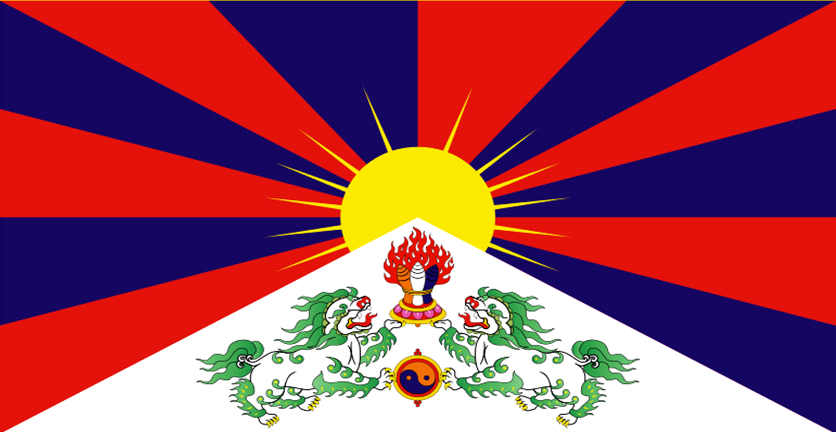St Peters Sint Martin: By Wade A Bailey.
I cite the World Bank 2020 report listed below under the Creative Commons Attribution 3.0 IGO license (CC BY 3.0 IGO) http://creativecommons. org/licenses/by/3.0/ igo. Under the Creative Commons Attribution license.
World Bank. 2020. Global Economic Prospects, June 2020. Washington, DC: World Bank. DOI: 10.1596/978-1-4648-1553-9. License: Creative Commons Attribution CC BY 3.0 IGO.
ISSN: 1014-8906 ISBN (paper): 978-1-4648-1553-9 ISBN (electronic): 978-1-4648-1580-5 DOI: 10.1596/978-1-4648-1553-9
What follows are various citations and highlights from the report listed previously, the report is used in documenting pertinent facts, that will highlight the dire looming possible economic crisis, that could engulf the global economy. The dire economic scenario presented previously, proves the unsustainability of the ‘one pillar’ economic model used, in the past by regional governments including Sint Martin, its inability to sustain the island’s populace, in a post-Covid19 world.
Global Outlook: Pandemic, Recession: The Global Economy in Crisis. The COVID-19 pandemic has, with alarming speed, delivered a global economic shock of enormous magnitude, leading to steep recessions in many countries. The baseline forecast envisions a 5.2 percent contraction in global GDP in 2020—the deepest global recession in eight decades, despite unprecedented policy support. Per capita incomes in the vast majority of EMDEs are expected to shrink this year. The global recession would be deeper if bringing the pandemic under control took longer than expected, or if financial stress triggered cascading defaults. The pandemic highlights the urgent need for health and economic policy action—including global cooperation—to cushion its consequences, protect vulnerable populations, and improve countries’ capacity to prevent and cope with similar events in the future. Since EMDEs are particularly vulnerable, it is critical to strengthen their public health care systems, to address the challenges posed by informality and limited safety nets, and, once the health crisis abates, to undertake reforms that enable strong and sustainable growth. Regional Macroeconomic Implications of COVID-19. The rapid rise of COVID-19 cases, together with the wide range of measures to slow the spread of the virus, has slowed economic activity precipitously in many EMDEs. Economic disruptions are likely to be more severe and protracted in those countries with larger domestic outbreaks, greater exposure to international spillovers (particularly through exposure to global commodity and financial markets, global value chains, and tourism), and larger pre-existing challenges such as informality. Growth forecasts for all regions have been severely downgraded; Latin America and the Caribbean (LAC) and Europe and Central Asia (ECA) in particular have large downgrades partly because of the size of their domestic outbreaks and exposure to global spillovers, while South Asia’s substantial downgrade is primarily the result of stringent lockdown measures. Many countries have avoided more adverse outcomes through sizable fiscal and monetary policy support measures. Despite these measures, per capita incomes in all EMDE regions are expected to contract in 2020, likely causing many millions to fall back into poverty. This edition of Global Economic Prospects also includes analytical chapters on the short- and long-term growth impact of the pandemic, as well as on global implications of the recent plunge in oil prices. Lasting Scars of the COVID-19 Pandemic. The COVID-19 pandemic has struck a devastating blow to an already-fragile global economy. Lockdowns and other restrictions needed to Executive Summary COVID-19 has triggered a global crisis like no other—a global health crisis that, in addition to an enormous human toll, is leading to the deepest global recession since the second world war. While the ultimate growth outcome is still uncertain, and an even worse scenario is possible if it takes longer to bring the health crisis under control, the pandemic will result in output contractions across the vast majority of emerging market and developing economies (EMDEs). Moreover, the pandemic is likely to exert lasting damage to fundamental determinants of long-term growth prospects, further eroding living standards for years to come. The immediate policy priorities are to alleviate the ongoing health and human costs and attenuate the near-term economic losses, while addressing challenges such as informality and weak social safety nets that have heightened the impact on vulnerable populations. Once the crisis abates, it will be necessary to reaffirm credible commitment to sustainable policies—including medium-term fiscal frameworks in energy-exporting EMDEs suffering from the large plunge in oil prices—and undertake the necessary reforms to buttress long-term growth prospects. For these actions, global coordination and cooperation will be critical. xvi address the public health crisis, together with spontaneous reductions in economic activity by many consumers and producers, constitute an unprecedented combination of adverse shocks that is causing deep recessions in many advanced economies and EMDEs. Those EMDEs that have weak health systems; those that rely heavily on global trade, tourism, or remittances from abroad; and those that depend on commodity exports will be particularly hard-hit. Beyond its short-term impact, deep recessions triggered by the pandemic are likely to leave lasting scars through multiple channels, including lower investment; erosion of the human capital of the unemployed; and a retreat from global trade and supply linkages. These effects may well lower potential growth and labor productivity in the longer term. Immediate policy measures should support health care systems and moderate the short-term impact of the pandemic on activity and employment. In addition, a comprehensive reform drive is needed to reduce the adverse impact of the pandemic on long-term growth prospects by improving governance and business environments and expanding investment in education and public health. Adding Fuel to the Fire: Cheap Oil during the Pandemic. The outbreak of COVID-19 and the wide-ranging measures needed to slow its advance have precipitated an unprecedented collapse in oil demand, a surge in oil inventories, and, in March, the steepest one-month decline in oil prices on record. In the context of the current restrictions on a broad swath of economic activity, low oil prices are unlikely to do much to buffer the effects of the pandemic, but they may provide some initial support for a recovery once these restrictions begin to be lifted. Like other countries, energy exporting EMDEs face an unprecedented public health crisis, but their fiscal positions were already strained even before the recent collapse in oil revenues. To help retain access to market-based financing for fiscal support programs, these EMDEs will need to make credible commitments to a sustainable medium-term fiscal position. For some of them, current low oil prices provide an opportunity to implement energy-pricing policies that yield efficiency and fiscal gains over the medium term.
The COVID-19 pandemic has, with alarming speed, delivered a global economic shock of enormous magnitude, leading to steep recessions in many countries. The baseline forecast envisions a 5.2 percent contraction in global GDP in 2020—the deepest global recession in eight decades, despite unprecedented policy support. Per capita incomes in the vast majority of emerging market and developing economies (EMDEs) are expected to shrink this year, tipping many millions back into poverty. The global recession would be deeper if bringing the pandemic under control took longer than expected, or if financial stress triggered cascading defaults. The pandemic highlights the urgent need for health and economic policy action—including global cooperation—to cushion its consequences, protect vulnerable populations, and improve countries’ capacity to prevent and cope with similar events in the future. Since EMDEs are particularly vulnerable, it is critical to strengthen their public health care systems, to address the challenges posed by informality and limited safety nets, and, once the health crisis abates, to undertake reforms that enable strong and sustainable growth.
Summary The COVID-19 pandemic has spread with astonishing speed to every part of the world and infected millions The health and human toll is already large and continues to grow, with hundreds of thousands of deaths and many more suffering from diminished prospects and disrupted livelihoods. The pandemic represents the largest economic shock the world economy has witnessed in decades, causing a collapse in global activity Various mitigation measures—such as lockdowns, closure of schools and non-essential business, and travel restrictions—have been imposed by most countries to limit the spread of COVID-19 and ease the strain on health care systems. The pandemic and associated mitigation measures have sharply curbed consumption and investment, as well as restricted labor supply and production. The cross-border spill overs have disrupted financial and commodity markets, global trade, supply chains, travel, and tourism. Financial markets have been extremely volatile, reflecting exceptionally high uncertainty and the worsening outlook. Flight to safety led to a sharp tightening of global and EMDE financial conditions. Equity markets around the world plunged, spreads on riskier categories of debt widened considerably, and EMDEs experienced large capital outflows in much of March and April that bottomed out only recently. Commodity prices have declined sharply as a result of falling global demand, with oil particularly affected (Figure 1.1.D). Many countries have provided large-scale macroeconomic support to alleviate the economic blow, which has contributed to a recent stabilization in financial markets. Central banks in advanced economies have cut policy rates and taken other far-reaching steps to provide liquidity and to maintain investor confidence. In many EMDEs, central banks have also eased monetary policy. The fiscal policy support that has been announced already far exceeds that enacted during the 2008-09 global financial crisis. In all, the pandemic is expected to plunge a majority of countries into recession this year, with per capita output contracting in the largest fraction of countries since 1870. Advanced economies are projected to shrink by 7 percent in 2020, as widespread social-distancing measures, a sharp tightening of financial conditions, and a collapse in external demand depress activity. Assuming that the outbreak remains under control and activity recovers later this year, China is projected to slow to 1 percent in 2020—by far the lowest growth it has registered in more than four decades. Due to the negative spillovers from weakness in major economies, alongside the disruptions associated with their own domestic outbreaks, EMDE GDP is forecast to contract by 2.5 percent in 2020. This would be well below the previous trough in EMDE growth of 0.9 percent in 1982, and the lowest rate since at least 1960, the earliest year with available aggregate data. EMDEs with large domestic COVID-19 outbreaks and limited health care capacity; that are deeply integrated in global value chains; that are heavily dependent on foreign financing; and that rely extensively on international trade, commodity exports, and tourism will suffer disproportionately. Commodity-exporting EMDEs will be hard hit by adverse spillovers from sharply weaker growth in China, and by the collapse in global commodity demand, especially for oil. With more than 90 percent of EMDEs expected to experience contractions in per capita incomes this year, many millions are likely to fall back into poverty. With advanced economies contracting, China experiencing record-low growth, and EMDE growth savaged by external and domestic headwinds, the global economy is expected to shrink by 5.2 percent this year in a baseline forecast. This would be the deepest global recession since World War II, and almost three times as steep as the 2009 global recession.
The 2020 global recession is expected to be the deepest in eight decades, and the subsequent recovery will be insufficient to bring output to previously projected levels. Amid heightened uncertainty, worse outcomes could arise if the pandemic and economic disruptions persist or cascading defaults amid high debt lead to financial crises. A lack of space is constraining fiscal responses in many EMDEs. Building resilient health care systems is critical to prevent similar crises. With ongoing recessions exerting scarring effects on potential output, pursuing reforms that bolster long-term growth prospects will be essential.
The forecast assumes that the pandemic recedes in such a way that domestic mitigation measures can be lifted by mid-year, adverse global spill overs ease during the second half of the year, and dislocations in financial markets are not long-lasting. Although a moderate recovery is envisioned in 2021, with global growth reaching 4.2 percent, output is not expected to return to its previously expected levels. Since uncertainty around the outlook remains exceptionally high, alternative scenarios help illustrate the range of plausible global growth outcomes in the. In particular, the baseline forecast for 2020 could prove optimistic. If COVID-19 outbreaks persist longer than expected, restrictions on movement and interactions may have to be maintained or reintroduced, prolonging the disruptions to domestic activity and further setting back confidence. Disruptions to activity would weaken businesses’ ability to remain in operation and service their debt, while the increase in risk aversion could raise interest rates for higher-risk borrowers. With debt levels already at historic highs, this could lead to cascading defaults and financial crises across many economies .Under this downside scenario, global growth would shrink almost 8 percent in 2020. The recovery that follows would be markedly sluggish, hampered by severely impaired balance sheets, heightened financial market stress and widespread bankruptcies in EMDEs. In 2021, global growth would barely begin to recover, increasing to just over 1 percent. In contrast, in an upside scenario, a sharp economic rebound would begin promptly if pandemic-control measures could be largely lifted in the near term, and fiscal and monetary policy responses succeed in supporting consumer and investor confidence, leading to a prompt normalization of financial conditions and the unleashing of pent-up demand. However, even with these positive developments, the near-term contraction in global activity of more than 3 percent in 2020 would still be much larger than during the global recession of 2009, and EMDE growth would also be negative. Once pandemic control measures are fully lifted, global growth would rebound markedly in 2021, to above 5 percent. Policymakers face formidable challenges as they seek to contain the devastating health, macroeconomic, and social effects of the pandemic. During the last global recession, in 2009, many EMDEs were able to implement large -scale fiscal and monetary responses. Today, however, many EMDEs are less prepared to weather a global downturn and must simultaneously grapple with a severe public health crisis with heavy human costs. Particularly vulnerable EMDEs include those that have weak health systems; those that rely heavily on global trade, tourism, and remittances; those that are prone to financial market disruptions; and those that depend on oil and other commodity exports. EMDEs where poverty and informality are widespread, including many low-income countries, are also vulnerable, since their poor have limited access to proper sanitation and adequate social safety nets, and often suffer greater food insecurity . An arsenal of macroprudential support policies has been deployed in EMDEs to maintain financial sector resilience and promote lending during the crisis. These include relaxing capital and liquidity coverage requirements, allowing banks to draw down capital and liquidity buffers, and encouraging banks to offer temporary loan repayment holidays to distressed borrowers. Further, many countries have initiated debt moratoria and government guarantees on bank loans to strengthen bank balance sheets and support distressed borrowers. Policymakers would, however, need to carefully balance some of these actions against jeopardizing the future stability of the financial sector. Once economic activity begins to normalize, they will also need to prudently withdraw the large-scale policy stimulus provided during the crisis without endangering the recovery. Meanwhile, many EMDEs have introduced fiscal measures to expand social safety nets and protect those most vulnerable, including wage support to preserve jobs, increased access to unemployment benefits, and targeted cash transfers to low-income households. In EMDEs with wider fiscal space, the policy response has been markedly greater than in those more constrained by higher debt levels. For many energy exporting EMDEs, fiscal balances are deteriorating as oil prices have fallen below fiscal break-even prices. Elevated debt burdens in some low- and middle-income countries also underscore the need for temporary debt relief. In this context, global coordination and cooperation—of the measures needed to slow the spread of the pandemic, and of the economic actions needed to alleviate the economic damage, including international support—provide the greatest chance of achieving public health goals and enabling a robust global recovery. In the near term, COVID-19 has underscored the need for governments to prioritize the timely and transparent dissemination of accurate information in order to stem the spread of the disease, and to build public trust. In the long term, the pandemic has laid bare the weaknesses of national health care and social safety nets in many countries. It has also exposed the severe consequences of widespread informality and financing constraints for small and medium enterprises (SMEs) in many EMDEs There is a critical need to invest in resilient health care systems that prioritize national health security, in order to prevent and mitigate similar crises It is also necessary to put in place social benefit systems that can provide an effective, flexible, and efficient safety net during disasters. Such systems can be augmented by measures to deliver income support and emergency financing to vulnerable groups such as the poor, urban slum dwellers, migrants, and informal firms. In particular, digital technologies can enhance the provision of cash transfers and other critical support measures, as well as facilitate the flow of remittances. In many countries, deep recessions triggered by COVID-19 will likely weigh on potential output for years to come. Governments can take steps to alleviate the adverse impact of the crisis on potential output by placing a renewed emphasis on reforms that can boost long-term growth prospects.
More to follow.
























